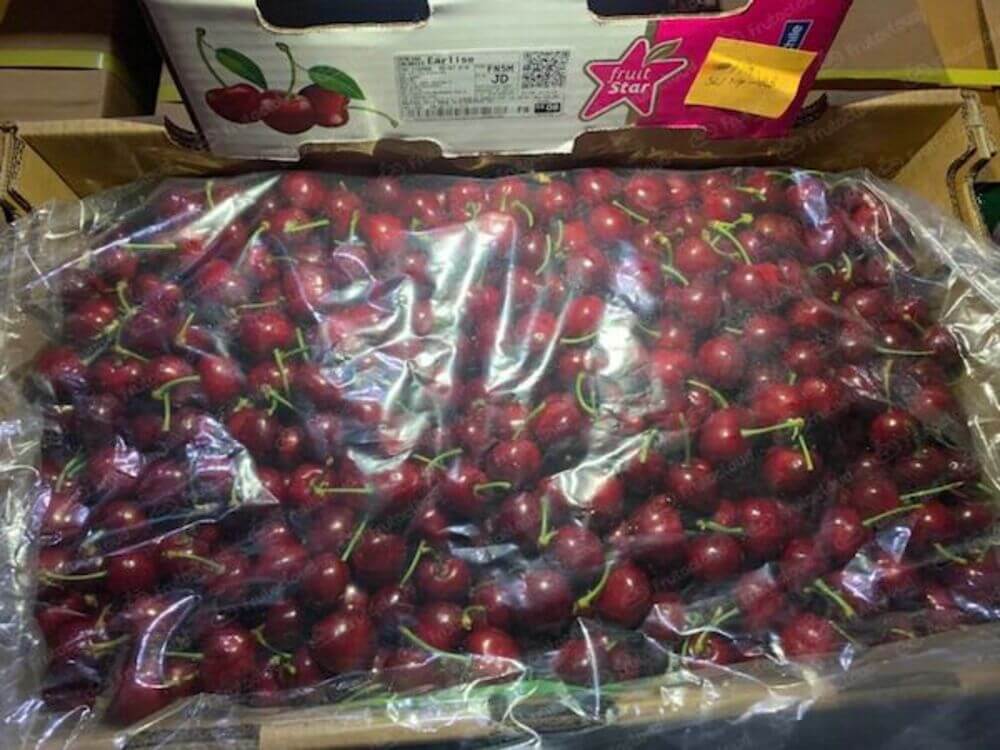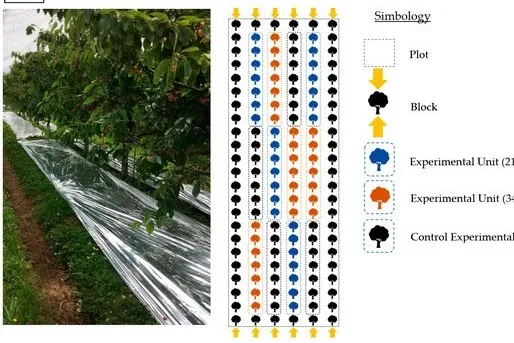Post-harvest preservation is one of the most challenging tasks for the sweet cherry supply chain, as these fruits have poor resistance to storage at room temperature and a commercial life that rarely exceeds 7–10 days.
With this in mind, a recent study conducted in China evaluated the effectiveness of treatments based on tea polyphenols, used alone or in combination with natural and synthetic preservatives, in preserving sweet cherry quality during 21 days of storage.
The cultivars used were “Brooks” and “Summit”, and the three treatments tested were: tea polyphenols (TP), tea polyphenols combined with natamycin (TN), and tea polyphenols combined with nisin (TI), compared with an untreated control.
Evaluation of cherry quality
The monitored parameters included firmness (hardness, resilience, and elasticity), color, weight loss, and total soluble solids (TSS), all important indicators of organoleptic and commercial quality.
The results showed that in both cultivars, hardness, resilience, and elasticity decreased significantly as storage time increased, while weight loss and total soluble solids increased, indicating the progression of metabolic and senescence processes.
At the same time, chromatic parameters revealed a progressive deterioration of color, with reductions in brightness, red hue, and chroma saturation.
Effectiveness of treatments
However, the intensity of deterioration varied depending on the treatment: all polyphenol-based solutions slowed the senescence process compared to the control, but with differences in effectiveness.
In particular, the combination of tea polyphenols + nisin (TI) showed the best synergistic effect, ensuring less loss of firmness and maintaining color and sensory characteristics for longer.
Next in order of effectiveness were the treatment with tea polyphenols alone (TP), followed by that with natamycin (TN), and finally the control.
Influence of cultivar
Multivariate analysis showed greater resistance to storage in the cultivar “Brooks” than in “Summit”, regardless of the treatment.
This suggests that intrinsic differences between cultivars, linked to genetic and physiological factors, play a decisive role in determining the best preservation strategies.
The results of the study, on one hand, confirm that the use of natural preservatives represents a valid approach, and on the other hand, demonstrate that the combination of tea polyphenols and nisin can provide an economically sustainable, easily applicable, and environmentally friendly solution for extending sweet cherries commercial life.
Properties and conclusions
Nisin acts as a natural antimicrobial, while tea polyphenols contribute antioxidant and antimicrobial properties, complementarily improving the fruit’s resistance to deterioration.
Moreover, an interesting finding is that, unlike nisin, the combination of tea polyphenols with natamycin did not produce better results than tea polyphenols alone, suggesting that functional synergy among different preservatives should be assessed on a case-by-case basis.
In conclusion, the combined use of tea polyphenols and nisin for “Brooks” and “Summit” sweet cherry cultivar preservation proved to be promising and could help reduce post-harvest losses, extend the marketing period, and improve perceived consumer quality while ensuring a high level of food safety.
However, the researchers recommend further investigation into the mechanisms of action of the different molecules and optimization of application conditions, including factors such as temperature, relative humidity, and treatment methods.
Source: Zhang, H., Guo, X., Li, Q., Ge, W., Li, Q., & Lin, H. (2025). Study on the eEects of tea polyphenols and their compound preservatives on the quality of two cultivars of sweet cherry fruits during storage period. Journal of Food Measurement and Characterization, 19, 3109–3121. https://doi.org/10.1007/s11694-025-03164-2
Image source: SL Fruit Service
Andrea Giovannini
University of Bologna (IT)
Cherry Times - All rights reserved












